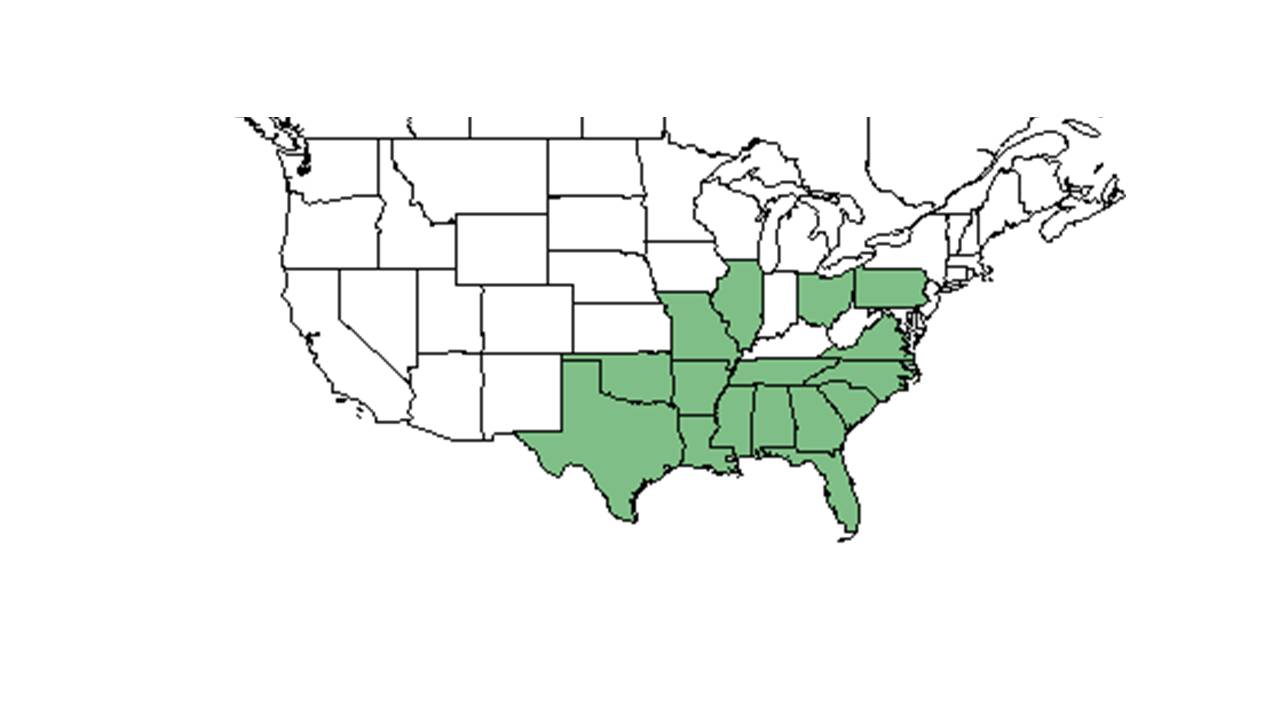Difference between revisions of "Jacquemontia tamnifolia"
(→Conservation and Management) |
Krobertson (talk | contribs) |
||
| Line 23: | Line 23: | ||
==Description== | ==Description== | ||
<!-- Basic life history facts such as annual/perrenial, monoecious/dioecious, root morphology, seed type, etc. --> | <!-- Basic life history facts such as annual/perrenial, monoecious/dioecious, root morphology, seed type, etc. --> | ||
| − | This species has a climbing and twining behavior | + | This species has a climbing and twining behavior. <ref name="FSU Herbarium">Florida State University Robert K. Godfrey Herbarium database. URL: [http://herbarium.bio.fsu.edu http://herbarium.bio.fsu.edu]. Last accessed: June 2014. Collectors: Andre F. Clewell, J. D. Dwyer, W. E. Harmon, Lisa Keppner, R. Komarek, Robert L. Lazor, and R. A. Norris. States and Counties: Florida: Leon and Washington. Georgia: Colquitt, Decatur, Grady, and Thomas. Countries: Honduras.</ref> |
| − | "Herbaceous, annual, twining vine. Leaves ovate to elliptic-ovate, 5-12 cm long, acuminate, cordate, or the base rarely rounded. Peduncles equaling or longer than the subtending leaf; inflorescence capitate, 2-3 cm broad, subtended by lanceolate or elliptic, foliaceous bracts; sepals lanceolate to subulate, densely fulvous-hirsute; corolla blue, funnelform, 1-2 cm broad; stigma lobes 2, ovoid or oblong, styles fused, ovary 2-locular. Capsule subglobose, 4-6 mm broad; seeds brownish black, glabrous, ca. 2 mm long." Radford et al 1964 | + | "Herbaceous, annual, twining vine. Leaves ovate to elliptic-ovate, 5-12 cm long, acuminate, cordate, or the base rarely rounded. Peduncles equaling or longer than the subtending leaf; inflorescence capitate, 2-3 cm broad, subtended by lanceolate or elliptic, foliaceous bracts; sepals lanceolate to subulate, densely fulvous-hirsute; corolla blue, funnelform, 1-2 cm broad; stigma lobes 2, ovoid or oblong, styles fused, ovary 2-locular. Capsule subglobose, 4-6 mm broad; seeds brownish black, glabrous, ca. 2 mm long." <ref name="Radford et al 1964">Radford, Albert E., Harry E. Ahles, and C. Ritchie Bell. Manual of the Vascular Flora of the Carolinas. 1964, 1968. The University of North Carolina Press. 863. Print.</ref> |
==Distribution== | ==Distribution== | ||
| Line 31: | Line 31: | ||
===Habitat=== <!--Natural communities, human disturbed habitats, topography, hydrology, soils, light, fire regime requirements for removal of competition, etc.--> | ===Habitat=== <!--Natural communities, human disturbed habitats, topography, hydrology, soils, light, fire regime requirements for removal of competition, etc.--> | ||
| − | This species has been found in floodplains and savannahs as well as disturbed areas such as old fields, corn fields, powerline corridors, along roadsides, and in grazed fallow fields | + | This species has been found in floodplains and savannahs as well as disturbed areas such as old fields, corn fields, powerline corridors, along roadsides, and in grazed fallow fields. <ref name="FSU Herbarium"/> |
<!--===Phenology===--> <!--Timing off flowering, fruiting, seed dispersal, and environmental triggers. Cite PanFlora website if appropriate: http://www.gilnelson.com/PanFlora/ --> | <!--===Phenology===--> <!--Timing off flowering, fruiting, seed dispersal, and environmental triggers. Cite PanFlora website if appropriate: http://www.gilnelson.com/PanFlora/ --> | ||
| Line 48: | Line 48: | ||
==References and notes== | ==References and notes== | ||
| − | |||
| − | |||
| − | |||
Revision as of 13:50, 29 July 2016
| Jacquemontia tamnifolia | |
|---|---|

| |
| Photo was taken by Gil Nelson | |
| Scientific classification | |
| Kingdom: | Plantae |
| Division: | Magnoliophyta - Flowering plants |
| Class: | Magnoliopsida – Dicotyledons |
| Order: | Solanales |
| Family: | Convolvulaceae |
| Genus: | Jacquemontia |
| Species: | J. tamnifolia |
| Binomial name | |
| Jacquemontia tamnifolia (L.) Griseb. | |

| |
| Natural range of Jacquemontia tamnifolia from USDA NRCS Plants Database. | |
Common name: hairy clustervine
Contents
Taxonomic notes
Synonym: Thyella tamnifolia (Linnaeus) Rafinesque
Description
This species has a climbing and twining behavior. [1]
"Herbaceous, annual, twining vine. Leaves ovate to elliptic-ovate, 5-12 cm long, acuminate, cordate, or the base rarely rounded. Peduncles equaling or longer than the subtending leaf; inflorescence capitate, 2-3 cm broad, subtended by lanceolate or elliptic, foliaceous bracts; sepals lanceolate to subulate, densely fulvous-hirsute; corolla blue, funnelform, 1-2 cm broad; stigma lobes 2, ovoid or oblong, styles fused, ovary 2-locular. Capsule subglobose, 4-6 mm broad; seeds brownish black, glabrous, ca. 2 mm long." [2]
Distribution
Ecology
Habitat
This species has been found in floodplains and savannahs as well as disturbed areas such as old fields, corn fields, powerline corridors, along roadsides, and in grazed fallow fields. [1]
Conservation and management
Cultivation and restoration
Photo Gallery
References and notes
- ↑ 1.0 1.1 Florida State University Robert K. Godfrey Herbarium database. URL: http://herbarium.bio.fsu.edu. Last accessed: June 2014. Collectors: Andre F. Clewell, J. D. Dwyer, W. E. Harmon, Lisa Keppner, R. Komarek, Robert L. Lazor, and R. A. Norris. States and Counties: Florida: Leon and Washington. Georgia: Colquitt, Decatur, Grady, and Thomas. Countries: Honduras.
- ↑ Radford, Albert E., Harry E. Ahles, and C. Ritchie Bell. Manual of the Vascular Flora of the Carolinas. 1964, 1968. The University of North Carolina Press. 863. Print.